Island Interpreters

Words by Daniel Bosley; Pictures by Aishath Naj
Beyond the resorts, the reviews, and the occasional ‘Trouble in Paradise’ story in the international media, information about the history and culture of the Maldives is not always easy to come by.
However, just as the country’s idyllic mystery has attracted millions of tourists, it has also brought a variety of explorers and academics whose combined work provides a patchwork of prose which can explain the country behind the fantasy.
From shipwrecked sailors and colonial civil servants, to wandering poets and ambitious academics, a colourful range of characters have left their mark…*
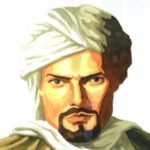 Ibn Battuta (1343 – 1345): An Islamic scholar and prolific traveller, the Moroccan Ibn Battuta spent 18 months in the Maldives during his medieval exploration of the Muslim world. His brief but eventful account of the islands was the first of its kind to reach the outside world.
Ibn Battuta (1343 – 1345): An Islamic scholar and prolific traveller, the Moroccan Ibn Battuta spent 18 months in the Maldives during his medieval exploration of the Muslim world. His brief but eventful account of the islands was the first of its kind to reach the outside world.
A trained judge who had also spent 3 years studying in Mecca, Battuta’s impressive credentials were well tested in Male’, as he attempted to enforce the more severe aspects of sharia. His experience with Maldivian women is notable, famously trying (and failing) to get them to cover their torsos, though this did not stop him marrying multiple times during his short stay (not clear if the two were related).
Battuta’s account also first revealed the archipelago’s pervasive politics, with his stay cut short after arousing the suspicion and jealousy of local bigwigs. After subsequently plotting to overthrow the islands with his Malabari friends, Battuta eventually left Asia, returning to his hometown of Tangiers to tell his tale.
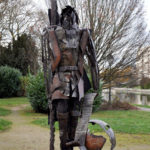
François Pyrard (1602-1607): The archetypal shipwreck story, French sailor François Pyrard’s experiences of the Maldives have the feel of classic adventure. Stranded on the reef, Pyrard’s ship was claimed by the Sultan, who – despite warming to him – kept the marooned mariner from leaving, on pain of death.
Suffering sickness and the loss of his colleagues, Pyrard still managed to record the mysterious islands in incredible detail before his liberation at the hands of Malabar invaders five years after his arrival.
His copious notes on life (and death) in the Maldives were published shortly after his return to western France in 1611, providing for the world the only detailed account of the isles between the 14th and 19th centuries.
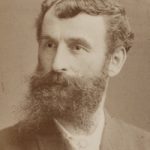
C.W. Rosset (1885): German explorer and businessman Carl Wilhelm Rosset travelled to the Maldives in 1885, becoming the first person to photograph the mysterious inhabitants. After collecting pictures and artefacts during a two month stay, he went on to author a number of articles about Maldives society and culture.
Thoroughly unimpressed by his interactions with the Sultan Ibrahim Nooraddeen, Rosset’s plans to travel more widely across the atolls were thwarted by a general suspicion of foreigners, exacerbated by his visit’s close proximity to German aggression in Africa – word of which had reached Male’. Historians have since argued that he may not even have met the Sultan, with a double being insisted upon by advisers still smarting from the Portuguese influence on Sultan Hassan IX 300 years before.
His account of the trip revealed the then endemic fevers that blighted the atolls, as well as fascinating details into Male’ society and culture. Tragically, most of his incredible photographs are thought to have been destroyed in Berlin at the end of the World War II.
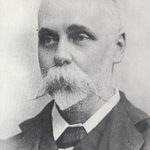 H.C.P. Bell (1879, 1922): British Civil Servant Henry Charles Purvis Bell followed Pyrard’s tradition of discovering the Maldives as part of his civil servant’s duties in Ceylon, though Maldivian hospitality had somewhat improved. Expressing a desire to pick up where the Frenchman left off, he set about studying the protectorate on behalf of the British government in Ceylon.
H.C.P. Bell (1879, 1922): British Civil Servant Henry Charles Purvis Bell followed Pyrard’s tradition of discovering the Maldives as part of his civil servant’s duties in Ceylon, though Maldivian hospitality had somewhat improved. Expressing a desire to pick up where the Frenchman left off, he set about studying the protectorate on behalf of the British government in Ceylon.
Specialising in archaeology, Bell returned to the Maldives after his retirement, unearthing remnants of the country’s pre-Islamic period. Bell’s detailed Monograph on the History, Archaeology and Epigraphy was published posthumously in 1940.
Bell hoped that his work might end what he regarded as the islands’ neglect by the British, which he felt perhaps a result of “mistaken delicacy”. Prime Minister Amin Didi would later describe him as the “foremost authority on the Maldives”, and a man whom the country would never forget.
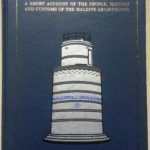
T.W. Hockly (1926, 1934): Also personally praised by Amin Didi, who referred to him as the ‘the lay preacher of Horawala’ (perhaps referring to his time in northern India), T.W. Hockly fulfilled his dream of visiting the Maldives on a Sri Lankan buggalow in 1926, before returning eight years later.
His subsequent account, The Two Thousand Isles, would provide excellent detail of his trip to Male’, as well as a thorough account of the political turbulence accompanying the Maldives first written constitution in 1932. (It has also lent its name to this blog).
Details of Hockly and his career are vague – he seems to have been a civil servant, and a book of coconut recipes published by a man of the same name in 1953 seems more than a coincidence. Hockly appears to have been a firm fixture in Colombo society, writing regular columns in the newspaper, performing consular duties for both Spain and Portugal, and founding a football club.
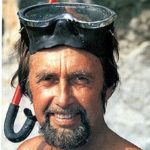 Hans Hass (1957 – 1958): The famous Austrian biologist, and pioneer in the world of ‘skin-diving’, Hans Hass turned his attention to the Maldives’ reefs and marine life in the late 1950s. The subsequent expedition produced a book – Expedition into the Unknown – as well as a series of television documentaries for the BBC, notable for their revolutionary use of underwater photography as well as Hass’s model/actress wife, Lotte.
Hans Hass (1957 – 1958): The famous Austrian biologist, and pioneer in the world of ‘skin-diving’, Hans Hass turned his attention to the Maldives’ reefs and marine life in the late 1950s. The subsequent expedition produced a book – Expedition into the Unknown – as well as a series of television documentaries for the BBC, notable for their revolutionary use of underwater photography as well as Hass’s model/actress wife, Lotte.
Expedition into the Unknown recounts the preparation and execution of his trip to the islands in late 1957. Chancing his arm with the British – recently returned to Gan – the celebrity Hass turned up at the base uninvited, but was soon allowed on reconnaissance flights in exchange for which he gave lectures to the RAF’s diving enthusiasts. His time in Addu also recounts a (slightly odd sounding) evening with the soon-to-be separatist leader Afif Didi.
The book and the accompanying 13 hours of documentary footage introduced the world to the wonders of the Maldives’ unique underwater kingdom, which was still decades away from making the isles’ world-renowned.
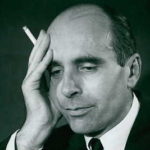 Hammond Innes (c.1959 – 1965?): Halfway into a career spanning six decades and over 40 published works, British novelist Hammond Innes produced what is thought to be the only English-language novel featuring the Maldives’ southernmost atoll, at the height of his fame in 1965.
Hammond Innes (c.1959 – 1965?): Halfway into a career spanning six decades and over 40 published works, British novelist Hammond Innes produced what is thought to be the only English-language novel featuring the Maldives’ southernmost atoll, at the height of his fame in 1965.
A former journalist and World War II veteran, Innes was renowned as a hands-on writer, eager to seek exotic locations and adventure before allowing his readers to follow in the pages of his books.
His vivid descriptions of Addu and RAF Gan in The Strode Venturer were later explained during in his 1967 travelogue Sea and Islands, in which he recounts his visit to RAF Gan and subsequent meeting with the breakaway Suvadive Republic’s leader Afif Didi.

Peter Doling (1971-1972): In detailing the life and times in Addu atoll during the British presence during WWII and as permanent residents on RAF between between 1957 and 1976, ex-‘Gan-ite’ Peter Doling may have inadvertently produced the most detailed study of any period in Maldivian history.
After joining the RAF at 24 years old, Doling was posted for his twelve months in Gan in 1971, just as life in the atoll began to return to normal after a decade of political tension. He returned to finish his service senior education officer at RAF Brize Norton before going on to lecture in management and strategic studies.
The detail and breadth of his 2005 book ‘From Port T to RAF Gan’ make it fairly heavy (literally) for the casual reader, but for anyone interested in the history of Addu and the political upheavals of the period, his work is without parallel.
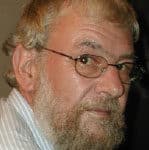 Nils Finn Munch-Petersen (1974 – ): Bell’s immediate successor in terms of scholarly investigation of the Maldives would come from Denmark, with social anthropologist Nils Finn Munch-Petersen drawn to the country’s persisting obscurity more than four decades on.
Nils Finn Munch-Petersen (1974 – ): Bell’s immediate successor in terms of scholarly investigation of the Maldives would come from Denmark, with social anthropologist Nils Finn Munch-Petersen drawn to the country’s persisting obscurity more than four decades on.
First setting foot in Male’ in 1974, he would return multiple times, visiting over 120 islands and every atoll over multiple visits since. Picking up where Rosset left off, Munch-Petersen captured island life in his photographs, and after rediscovering Bell’s forgotten Buddhist relics in Colombo, he set about collecting Maldivian artifacts for exhibition in his home country.
After an extended stay in Fuvahmulah in order to learn Dhivehi, Munch-Petersen published the findings of his extensive research in 1980’s Maldiverne: Et Øsamfund i Det Indiske Ocean. He has returned to the country on countless occasions since, working on projects for the EU and the World Bank amongst others. His research has taken him throughout South Asia, Africa and the Pacific Islands.
 Clarence Maloney (1975): American anthropologist Clarence Maloney grew up in Tamil Nadu, developing a keen interest in South Asian civilisation. When he conducted his Maldives research islands in 1975, he was to provide a final snapshot of a country on the verge on incredible change.
Clarence Maloney (1975): American anthropologist Clarence Maloney grew up in Tamil Nadu, developing a keen interest in South Asian civilisation. When he conducted his Maldives research islands in 1975, he was to provide a final snapshot of a country on the verge on incredible change.
Despite Maloney’s rather studious avoidance of the country’s political affairs, his groundbreaking research into the origins of the Maldivian people, their culture and religion saw copies of his book – People of the Maldives Islands – censored by the authorities between 1978 and 2008.
The academic rigour of the work has set the benchmark for studies of the country that has yet to be bettered. Despite the vital importance of his research for anyone seeking to understand the complex nation, copies of this book are still hard to obtain.
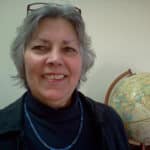 Elizabeth Colton (1976 – 1983): Having befriended a young Maumoon Abdul Gayoom in New York in the mid-70s, US anthropologist Elizabeth Colton originally travelled to the Maldives to study the impact of the nascent tourism industry on the islands.
Elizabeth Colton (1976 – 1983): Having befriended a young Maumoon Abdul Gayoom in New York in the mid-70s, US anthropologist Elizabeth Colton originally travelled to the Maldives to study the impact of the nascent tourism industry on the islands.
After having gained unprecedented access to the upper echelons of the Maldivian aristocracy, however, the country’s social hierarchy soon became the subject of her work. Perhaps inevitably, she found herself closer to events that she would have expected, experiencing at first hand the schizophrenic nature of the country’s politics.
Chastened by these experiences, and moving onto a successful career as a journalist, author and diplomat, it would be more than a decade after she left the Maldives before the publication of her thesis The Elite of the Maldives: Sociopolitical Organisation and Change.
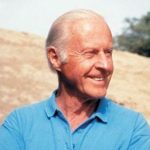 Thor Heyerdahl (1982, 1983, 1984): Perhaps the most high profile author to have studied the Maldives, Norwegian explorer Thor Heyerdahl made his name investigating the links between the peoples of South America and Polynesia, as well as conducting one of the earliest explorations of Easter Island.
Thor Heyerdahl (1982, 1983, 1984): Perhaps the most high profile author to have studied the Maldives, Norwegian explorer Thor Heyerdahl made his name investigating the links between the peoples of South America and Polynesia, as well as conducting one of the earliest explorations of Easter Island.
Visiting the Maldives later in his career, his book The Maldive Mystery theorised that the islands’ earth mounds, first identified as Buddhist in origin, were evidence of an ancient sun-worshipping tribe. While conducting the first (and perhaps only) modern archaeological excavations in the country’s history, Heyerdahl’s team found an abundance of artefacts just beneath the atolls’ sand, exposing more questions than answers about the past that many islanders seem keen to hide.
The popularity of the world-famous (but often criticised) Heyerdahl’s – often debunked – Maldivian work meant that it has often appeared in potted histories of the travel destination, largely due to the absence of other available sources; no trace of this work or its finds currently appear in the explorer’s own Oslo museum.
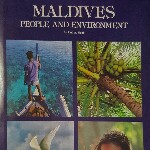 Paul A. Webb (1980s): As far as introductory books on the Maldives go, Paul Webb’s ‘Maldives – People and Environment’ is hard to beat. Concise and yet thorough, his island research in 1980s also produced a collection of never-seen-before pictures of island life and culture.
Paul A. Webb (1980s): As far as introductory books on the Maldives go, Paul Webb’s ‘Maldives – People and Environment’ is hard to beat. Concise and yet thorough, his island research in 1980s also produced a collection of never-seen-before pictures of island life and culture.
Before his three years spent travelling in the Maldives, Englishman Webb wrote a similar book about the deserts of Arabia as well as writing for numerous journals around the world.
The book gives an overview of life in villages, the jungles and on the reef with insightful analysis that provides reliable information for even those who feel they know the country well.
 Xavier Romero-Frias (1979 – 1992): Barcelona-born Xavier Romero-Frias lived in the Maldives’ atolls for a 13-year period, becoming fluent in Dhivehi, studying its dialects and becoming more familiar with Maldivian culture than any other author.
Xavier Romero-Frias (1979 – 1992): Barcelona-born Xavier Romero-Frias lived in the Maldives’ atolls for a 13-year period, becoming fluent in Dhivehi, studying its dialects and becoming more familiar with Maldivian culture than any other author.
As with Maloney’s work, Xavier’s monograph The Maldive Islanders, A Study of the Popular Culture of an Ancient Ocean Kingdom would prove controversial with the authorities, in particular his criticism of the ‘arabisation’ of the country during the 1980s and 90s.
Hoping to revive interest in what he saw as the ailing island culture, Xavier also collected traditional folk tales during his time in the country, later publishing and illustrating Folk Tales of the Maldives, which made eighty of these stories available for an English-speaking audience. Despite being less controversial than the now out of print Maldive Islanders, his second book also faced restrictions within the country.
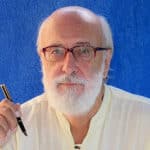 Royston Ellis (1983 – ): Starting his career as a beat poet in late 1950s Britain, Royston Ellis is said to have been the inspiration behind the Beatles’ classic ‘Paperback Writer’. Also referred to as Britain’s answer to Allen Ginsberg, Ellis set out to travel the world at the age of 20.
Royston Ellis (1983 – ): Starting his career as a beat poet in late 1950s Britain, Royston Ellis is said to have been the inspiration behind the Beatles’ classic ‘Paperback Writer’. Also referred to as Britain’s answer to Allen Ginsberg, Ellis set out to travel the world at the age of 20.
Settling in Sri Lanka in 1981 he soon visited the Maldives. After having written guide books on the islands he became acquainted with President Maumoon Abdul Gayoom in the 90s, later being asked to pen his autobiography, A Man for all Islands.
Other notable books on the Maldives have included a fictionalised account of Mohamed Thakurufaanu’s liberation struggle against the Portuguese, stories about the earliest resorts (Kurumba and Bandos), and the memoirs of Ali Umar Maniku.
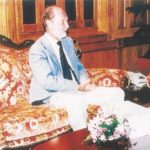 Lars Vilgon (1991 – 2001): Somewhat of a mystery man himself, Swedish collector Lars Vilgon has amassed a collection of Maldives literature surpassed only by the country’s national library, which is where we discovered his work.
Lars Vilgon (1991 – 2001): Somewhat of a mystery man himself, Swedish collector Lars Vilgon has amassed a collection of Maldives literature surpassed only by the country’s national library, which is where we discovered his work.
After first being captivated by the islands as a tourist in 1971, Vilgon’s passion for the country grew from his proud collection of four books to a personal treasure trove of around 3000 books, document and manuscripts, covering all of Maldives recorded history.
As well as his complete bibliography, nine volumes of his privately published ‘Maldives Odd History’ are to be found in the National Collection in Male. These feature English translations of some of the earliest travel encounters with the islands (including some in this list).
 Sonja Fritz-Gippert (1988, 1992, 1993, 1999, 2002): An Austrian professor of linguistics, Sonja Fritz-Gippert first came to the Maldives in the late 1980s to conduct fieldwork into the Dhivehi language, whose obscurity was suggested in the title of her first paper: Dhivehi – an almost unknown Modern Indo-Aryan language.
Sonja Fritz-Gippert (1988, 1992, 1993, 1999, 2002): An Austrian professor of linguistics, Sonja Fritz-Gippert first came to the Maldives in the late 1980s to conduct fieldwork into the Dhivehi language, whose obscurity was suggested in the title of her first paper: Dhivehi – an almost unknown Modern Indo-Aryan language.
Returning to the Maldives in the early 1990s, she became particularly interested in the more archaic southern dialects of Addu and Fuvahmulah, which she noted were fading as a result of centralisation and mass media. Fritz-Gippert also emphasized the importance of Dhivehi as a window into the archipelago’s hazy past, seeking to fill in the considerable gaps in academic knowledge.
She would later publish an expanded version of her thesis in 2001, The Dhivehi Language: A Descriptive and Historical Grammar of Maldivian and its Dialects. The work represents the first comprehensive study of the Maldives’ language since Wilhelm Geiger – who had never visited the islands – a century before.
Michael O’Shea and Fareesha Abdulla (1996 – ): After meeting overseas before getting married in 1995, Maldivian Fareesha and Australian Michael set about compiling and translating historical documents on their website maldivesculture.com.
With few ways to access even the country’s limited historical – and often suppressed – history, maldivesculture opened a new window into the Maldives for readers both at home and abroad.
After falling victim to a cyber attack last year, the website is currently offline, though its archives can be accessed via internet archive sites.
 JJ Robinson (2009-2013): Hired to edit the country’s best-known English language publication Minivan News, the Australian/British writer became the first foreign journalist to be granted a work permit in the Maldives.
JJ Robinson (2009-2013): Hired to edit the country’s best-known English language publication Minivan News, the Australian/British writer became the first foreign journalist to be granted a work permit in the Maldives.
Arriving to assist in the development of the fifth pillar following the up-to-then peaceful transition to democracy, Robinson would become the international community’s eyes and ears on the ground during the coming political crises.
His resulting book The Maldives; Islamic Republic, Tropical Autocracy gives a blow-by-blow account of the first democratically-elected president Mohamed Nasheed’s downfall, as well as the – at times – surreal experience of editing a small newspaper in the capital. His work provides unprecedented insight into the chaotic modern politics of the island nation.

Leave a comment